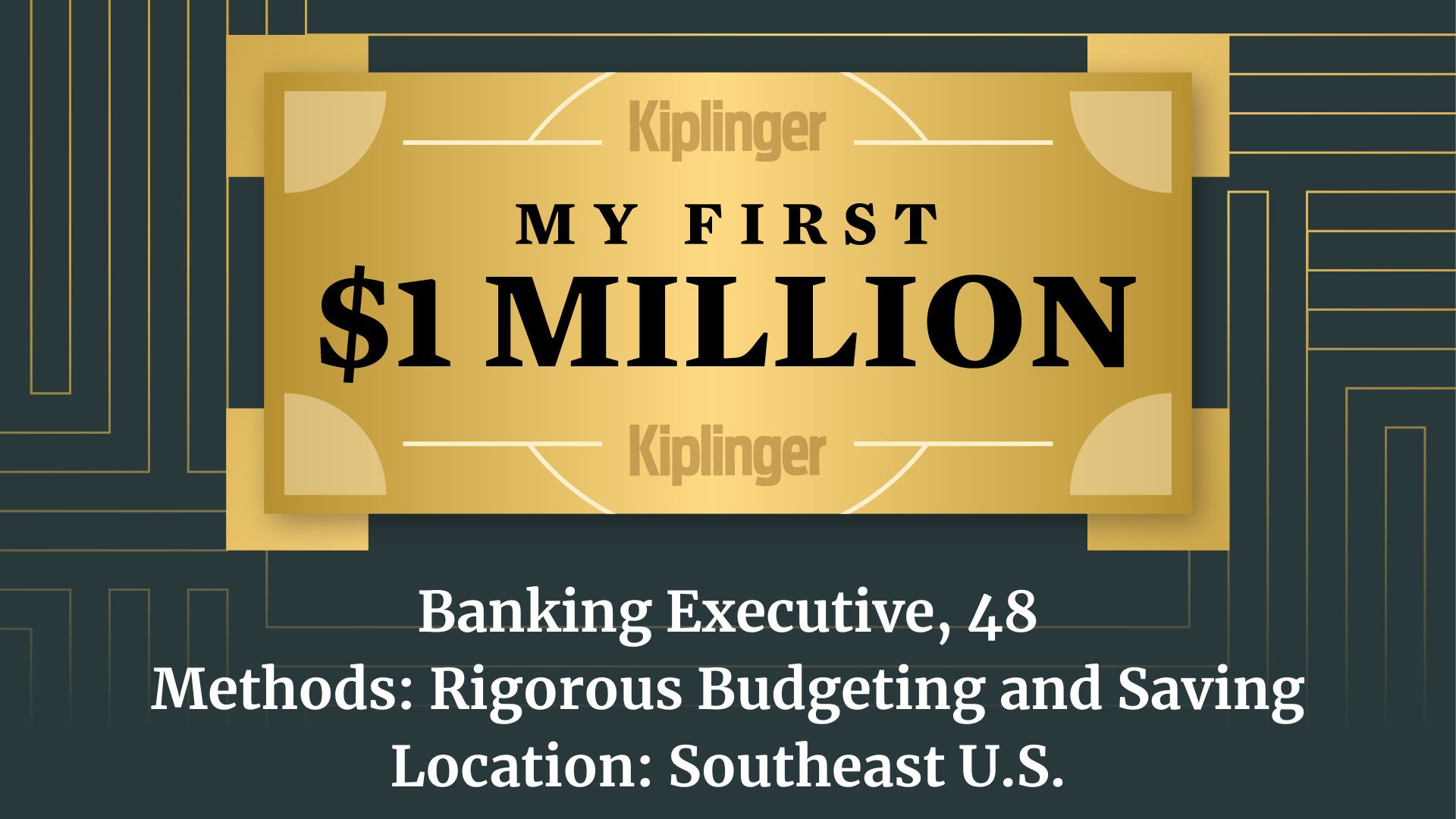Budget Travel Tips Straight from a Financial Planner's Own Family Trip Abroad
Here's what my family of five actually paid for three months of travel to Spain and how we kept our costs low. We aren't rich, but we know how to carefully plan and budget. Follow our tips to help make your own dream happen.


When my husband and I revealed that we were making a dream of spending three months abroad in Spain with our three kids a reality, the people we told were happy for us … but we could almost see the wheels turning in their heads. Hmm, three months, five people, that sounds outrageously expensive.
So, it’s time to address the elephant in the room. Probably the question you most want to ask but were too afraid (at the risk of sounding impolite): How did we pay for three months abroad in Spain as a family of five?
I’m willing to bare all, financially speaking, so that you can see how we did it, and so that maybe you can make one of your big dreams a reality, too.
From just $107.88 $24.99 for Kiplinger Personal Finance
Become a smarter, better informed investor. Subscribe from just $107.88 $24.99, plus get up to 4 Special Issues

Sign up for Kiplinger’s Free Newsletters
Profit and prosper with the best of expert advice on investing, taxes, retirement, personal finance and more - straight to your e-mail.
Profit and prosper with the best of expert advice - straight to your e-mail.
In short, there were three key elements (the three Ps):
- Planning
- Prepayment of large expenses, and
- Purchases abroad
Let’s break apart each of the P’s in detail. I’m going to use my family’s story as an example and then end the article with a practical application you can use.
1. Planning
This was arguably the most important step to financially prepare for our trip. When we originally had the idea to travel, we considered a seven-month adventure. We began planning this trip in March 2017 and anticipated a January 2018 departure.
We were not independently wealthy, did not receive any substantial inheritance or gifts from family, and worked hard for each dollar earned. My husband, Bryan, and I have always lived frugally and responsibly. Spending money on experiences rather than tangible items is important to us. Below is other important background info.
A. To make our European dream a reality, Bryan had to quit his job and become a “stay-at-home dad” while overseas.
This was an incredibly scary thing for him. He went through a short period of unemployment in summer 2016 when he was 34. Otherwise, he worked since the age of 14. Furthermore, he’s lived in the same area of Missouri nearly all his life. Bryan’s first travel outside Missouri was late high school, and he took a three-week European backpacking adventure in summer 2004. Essentially, I asked Bryan to transition from a steady full-time job as a treasury manager in a familiar area to no employment in a foreign country.
B. My plan was to continue working while overseas.
I love being an entrepreneur and take pride in the value I’m providing to other families. Plus, we couldn’t both afford to be stay-at-home parents. Outside of a financial windfall, we did not have enough saved in non-retirement accounts to fund the seven-month adventure. However, we had savings available to meet any shortfall between my after-tax income and our expected 2018 bills abroad.
Our preliminary budget for January to July 2018 looked like this:
- Lodging: $16,000
- Medical Insurance (Kids): $737
- Medical Insurance (Adults): $559
- Food: $10,500
- Round-trip Flights: $8,000
- Intra-Europe Travel: $8,400
- Entertainment: $4,200
TOTAL COST: $48,396
Making our home available to renters would offset the mortgage and utility payments, so these expenses were intentionally ignored. We assumed five months in the U.S. (August to December 2018) with $8,000 monthly living expense. Total 2018 living expenses were projected to be $88,396 ($48,396 abroad and $40,000 domestic). I estimated another $25,000 for taxes (federal, state, FICA, etc.). Just because we were outside the U.S. didn’t mean we were allowed to stop paying Uncle Sam.
Our anticipated 2018 income was $90,000 — including my projected business income plus employment income for Bryan when we returned to the U.S. In total, we were looking at a $23,000 shortfall that would be funded with savings.
Later in 2017, we decided to cut the trip to three months. The seven-month budget was no longer relevant, and I had a much better idea of my projected first-quarter income from WorthyNest® and SV CPA Services. We now expected a $3,000 shortfall in 2018 … a much easier pill to swallow.
2. Prepayment of large expenses
In addition to careful planning, we were very budget-conscious in all travel decisions.
FLIGHTS
My parents live in Florida, and airlines in Miami and Fort Lauderdale offered dirt-cheap overseas flights. We left St. Louis on Jan. 4, 2018, and stayed with my parents on Florida’s west coast for a few days before our non-stop flight on Norwegian Airlines. The overnight flight departed from Fort Lauderdale on Jan. 9 and arrived in Barcelona on Jan. 10. This flight, booked in May 2017, only cost $1,455 for our family of five. How did I get such cheap flights? I just searched on my own (mostly Kayak) and came across Norwegian Airlines. The time of year (winter) certainly helped.
Our return flight to the U.S. was TAP Air Portugal, an airline I found that offers inexpensive flights from most Spanish cities to Florida. We booked the flight in December 2017 for $1,719 in total. We departed from Seville, had a layover in Lisbon, and flew into Miami. After spending a few days in Florida, we returned to St. Louis in early April 2018
.
To travel to and from Florida, our flights were $744 on budget airline Frontier. We also incurred gas costs and hotel stays each way — about $500 total.
I had originally envisioned spending $8,000 on round-trip travel to/from Europe, but we came in under-budget with approximately $4,500 of “all-in” costs, a $3,500 savings.
RENTALS
We saved money on lodging by doing longer-term rentals. Renting apartments by the month on Airbnb costs about the same as a two-week rental in most European cities. Staying in a single location for a longer time period also gave our young boys a sense of stability. That was essential, as they thrive on routine. The downside for a monthly rental is the strict cancellation policy — no refunds if we ended our stay early or didn’t show.
In total, we spent $6,672 on three-bedroom Airbnb rentals for our time abroad. We started with 10 days in Barcelona, stayed in Valencia for a month, Madrid for a few weeks, and then concluded in Seville. Except for the apartment in Valencia (which was spectacular), we prioritized budget over location and amenities.
OTHER
Beyond flights and rentals, we booked travel insurance in 2017. Funding these big expenses when our earnings were strong made the adventure more manageable. We also waited to book the return flights and Airbnb rentals until we were absolutely certain that our trip would happen; our January 2018 flight was the only thing booked prior to December 2017.
Transportation costs were affordable. We stuck to large cities and benefitted from public transit. We used the bus or metro system the entire time, never opting for a car rental. We traveled between cities (i.e., Barcelona to Valencia) using high-speed AVE trains. Staying within Spain made it easier to travel with little ones because flights to another European country would have involved extra time, cost, and hassle.
3. Purchases abroad
This thread of frugality carried into our day-to-day spending as well. We purposefully choose rentals over hotels so we could cook two meals from the apartment and eat out once daily. I can only speak about Spain, but tip and tax were always included in the meal price. Especially in Seville, meals were very affordable.
We avoided expensive city bus tours, because those were designed for travelers who wanted a quick overview and were only staying for a few days. Living a minimum of 10 days in each city enabled us to take our time and explore attractions that were most meaningful to our family. Additionally, we paid attention to any “free” entrance times or rate specials. For example, the world-renowned Prado art museum in Madrid had a two-hour window toward the end of each day whereby they didn’t charge admission. Parque de Atracciones in Madrid was within walking distance of our rental, and we found a great deal one Sunday – 60 euros for admission for our entire family.
One item where we missed the mark? Transaction fees. We decided in December to proceed with the trip and did not have time to order currency through our local bank nor review credit cards that would be suitable for international travel. Our U.S. dollar to euro conversion at the Barcelona airport was an awful exchange rate. Furthermore, we had a 3% surcharge on all credit card transactions and ATM withdrawals abroad. As a financial planner, I regret that we incurred over $182 in credit card foreign transaction fees.
Except for transaction costs, we budgeted well and didn’t dip into savings to fund this trip. Perseverance and determination pay off!
What’s Your Dream?
Is your family eyeing a similar adventure? Maybe you are envisioning a one or two-week vacation. Well, you can follow the same principles.
- Plan carefully.
- Arrange large expenditures ahead of time.
- And look for deals once you’ve arrived at the destination.
All-inclusive resorts and vacation packages are popular because you can anticipate many of the costs. However, as we found in Europe, most of the cost is attributable to flights and living quarters. Staying off the beaten path and using discount airlines worked well for our family. What works best for yours?
P.S.: To read Part 1 of this series, about how we overcame the inertia involved with making big goals happen (there’s never a “right time” to take the plunge, right?), click here.
Profit and prosper with the best of Kiplinger's advice on investing, taxes, retirement, personal finance and much more. Delivered daily. Enter your email in the box and click Sign Me Up.

Deborah L. Meyer, CFP®, CPA/PFS, CEPA and AFCPE® Member, is the award-winning author of Redefining Family Wealth: A Parent’s Guide to Purposeful Living. Deb is the CEO of WorthyNest®, a fee-only, fiduciary wealth management firm that helps Christian parents and Christian entrepreneurs across the U.S. integrate faith and family into financial decision-making. She also provides accounting, exit planning and tax strategies to family-owned businesses through SV CPA Services.
-
 How to Safely Open an Online Savings Account
How to Safely Open an Online Savings AccountOnline banks offer generous APYs that most brick-and-mortar banks can't match. If you want to make the switch to online but have been hesitant, I'll show you how to do it safely.
-
 7 Ways to Age Gracefully Like the Best Stock Photo Seniors
7 Ways to Age Gracefully Like the Best Stock Photo SeniorsAs a retirement editor, I've gleaned valuable wisdom (and a lot of laughs) from one older couple that tops the seniors' stock photo charts.
-
 My First $1 Million: Banking Executive, 48, Southeast U.S.
My First $1 Million: Banking Executive, 48, Southeast U.S.Ever wonder how someone who's made a million dollars or more did it? Kiplinger's My First $1 Million series uncovers the answers.
-
 Time to Close the Books on 2025: Don't Start the New Year Without First Making These Money Moves
Time to Close the Books on 2025: Don't Start the New Year Without First Making These Money MovesAs 2025 draws to a close, take time to review your finances, maximize tax efficiency and align your goals for 2026 with the changing financial landscape.
-
 I'm an Insurance Expert: Sure, There's Always Tomorrow to Report Your Claim, But Procrastination Could Cost You
I'm an Insurance Expert: Sure, There's Always Tomorrow to Report Your Claim, But Procrastination Could Cost YouThe longer you wait to file an insurance claim, the bigger the problem could get — and the more leverage you're giving your insurer to deny it.
-
 Introducing Your CD's Edgier Cousin: The Market-Linked CD
Introducing Your CD's Edgier Cousin: The Market-Linked CDTraditional CDs are a safe option for savers, but they don't always beat inflation. Should you try their counterparts, market-linked CDs, for better returns?
-
 How to Protect Yourself and Others From a Troubled Adult Child: A Lesson from Real Life
How to Protect Yourself and Others From a Troubled Adult Child: A Lesson from Real LifeThis case of a violent adult son whose parents are in denial is an example of the extreme risks some parents face if they neglect essential safety precautions.
-
 A Financial Planner Takes a Deep Dive Into How Charitable Trusts Benefit You and Your Favorite Charities
A Financial Planner Takes a Deep Dive Into How Charitable Trusts Benefit You and Your Favorite CharitiesThese dual-purpose tools let affluent families combine philanthropic goals with advanced tax planning to generate income, reduce estate taxes and preserve wealth.
-
 How Financial Advisers Can Best Help Widowed and Divorced Women
How Financial Advisers Can Best Help Widowed and Divorced WomenApproaching conversations with empathy and compassion is key to helping them find clarity and confidence and take control of their financial futures.
-
 4 Financial To-Dos to Finish 2025 Strong and Start 2026 on Solid Ground
4 Financial To-Dos to Finish 2025 Strong and Start 2026 on Solid GroundDon't overlook these important year-end check-ins. Missed opportunities and avoidable mistakes could end up costing you if you're not paying attention.
-
 I'm an Insurance Pro: It's Time to Prepare for Natural Disasters Like They Could Happen to You
I'm an Insurance Pro: It's Time to Prepare for Natural Disasters Like They Could Happen to YouYou can no longer have the mindset that "that won't happen here." Because it absolutely could. As we head into 2026, consider making a disaster plan.